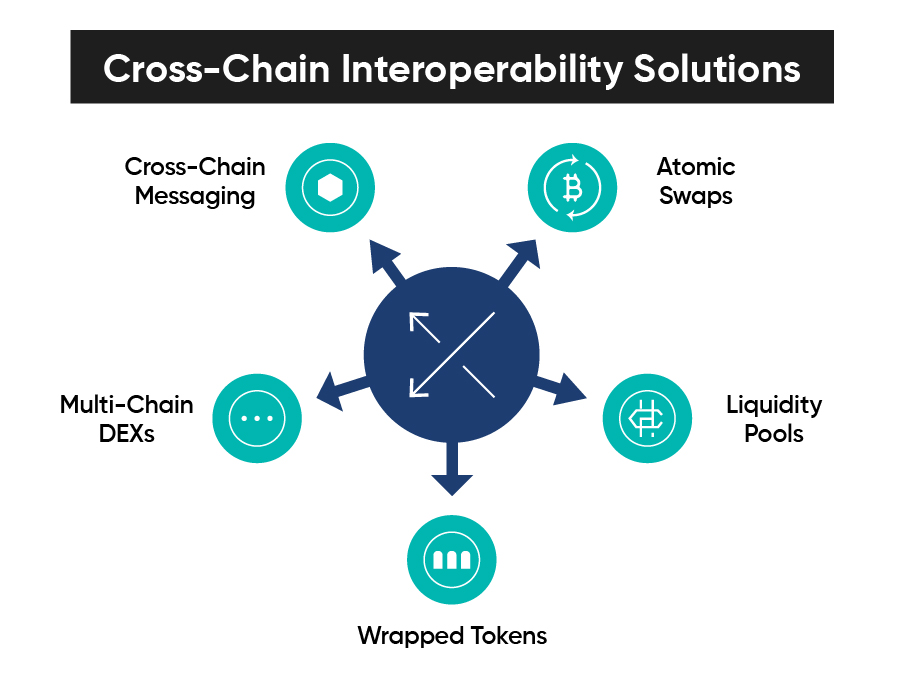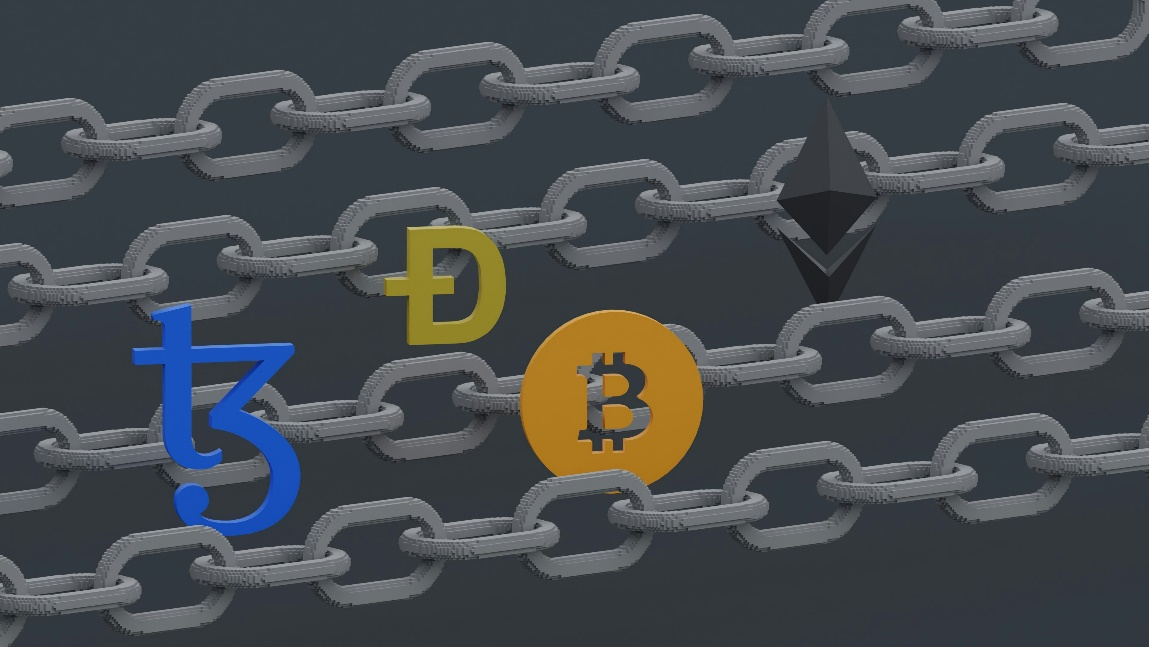As the cryptocurrency market expands, the need for efficient and seamless trading between different blockchain networks has never been more crucial. Cross-chain liquidity solutions are emerging as a game-changer, enabling users to transfer assets between chains without relying on centralized intermediaries. Innovations like interoperability protocols and decentralized exchanges (DEXs) are reducing fragmentation and increasing market efficiency, paving the way for a more fluid digital asset ecosystem.
This article explores the importance of cross-chain liquidity, how it is transforming digital asset trading, and what investors need to know about its future potential.
Understanding Cross-Chain Liquidity
Cross-chain liquidity refers to the ability to transfer digital assets between different blockchains while maintaining liquidity across networks. Traditionally, cryptocurrencies exist in siloed ecosystems, meaning Bitcoin (BTC) cannot be directly swapped for Ethereum (ETH) without using centralized exchanges. However, with blockchain asset consulting and technological advancements in interoperability, new solutions have emerged to facilitate seamless cross-chain transactions.

Key Technologies Enabling Cross-Chain Liquidity
- Blockchain Bridges
Blockchain bridges connect different networks, allowing assets to be wrapped and transferred between chains. Wrapped Bitcoin (WBTC) is an example of a tokenized BTC on the Ethereum blockchain, enabling BTC holders to participate in decentralized finance (DeFi). - Atomic Swaps
Atomic swaps are peer-to-peer exchanges of cryptocurrencies across different blockchains without intermediaries. These swaps rely on smart contracts and hashed time-locked contracts (HTLCs) to ensure trustless transactions. - Interoperability Protocols
Protocols like Polkadot, Cosmos, and Thorchain facilitate seamless communication between blockchains, enabling assets to move efficiently. Such innovations drive the demand for digital asset investment solutionsand DeFi finance consulting services. - Cross-Chain Decentralized Exchanges (DEXs)
Cross-chain DEXs like THORSwap and SushiXSwap allow traders to swap assets from different networks without needing a centralized exchange, further decentralizing liquidity.
The Role of Cross-Chain Liquidity in DeFi
Decentralized finance (DeFi) thrives on liquidity. Without sufficient liquidity, trading pairs become inefficient, leading to high slippage and increased transaction costs. Cross-chain liquidity enhances the DeFi ecosystem in several ways:
- Reduces Dependence on Centralized Exchanges:With seamless interoperability, users can trade directly between networks without relying on traditional exchanges, mitigating risks like hacks and withdrawal restrictions.
- Increases Capital Efficiency:By allowing assets to move freely across chains, traders and liquidity providers maximize their capital without being locked into a single blockchain.
- Enhances Market Stability:More accessible liquidity across networks leads to better price discovery and reduced volatility, benefiting portfolio management consultants and hedge fund investment companies.
Challenges in Cross-Chain Liquidity
While cross-chain liquidity presents exciting opportunities, it also comes with inherent challenges:
Security Risks
Blockchain bridges have been a major target for hackers. According to Chainalysis, over $2 billion worth of assets were stolen from cross-chain bridges in 2022. Security remains a top priority for digital asset management consultants and digital asset consulting for compliance to ensure funds remain protected.
Scalability Issues
Interoperability protocols must handle large transaction volumes without congestion. Layer 2 scaling solutions and efficient consensus mechanisms are needed to support mass adoption.
Regulatory Uncertainty
The decentralized nature of cross-chain liquidity poses regulatory challenges, as assets flow between chains without oversight. Governments and financial bodies are still formulating frameworks, impacting Security tokens investment consultants and real world DeFi investment consultants.
The Future of Cross-Chain Liquidity
Growth of Multi-Chain Strategies
More projects are adopting a multi-chain approach, ensuring their ecosystems remain interoperable with multiple networks. Crypto investment companies and bitcoin investment consultants are increasingly focusing on diversifying liquidity across different blockchains.
Institutional Adoption
Traditional financial institutions are beginning to explore cross-chain liquidity to enhance asset management strategies. Digital asset management companies and investment analysis and portfolio management firms are researching ways to integrate cross-chain functionality into their operations.
Stablecoins for Cross-Chain Transactions
Stablecoins for investment are playing a significant role in cross-chain liquidity. USDC and USDT, for instance, exist on multiple blockchains, ensuring smooth transactions across DeFi platforms. Stablecoin investment consultants analyze the best practices for leveraging stablecoins in cross-chain trading.
Real-World Asset (RWA) Tokenization
Tokenizing real-world assets (RWA) on blockchain networks is gaining traction. RWA tokenization investment consultants and real-world assets on chain investment consultants are helping businesses explore ways to digitize traditional assets while ensuring liquidity across different blockchains.
Conclusion
Cross-chain liquidity is revolutionizing the way digital assets are traded, creating a more interconnected and efficient blockchain ecosystem. While challenges like security and regulation remain, innovations in interoperability protocols, DeFi platforms, and stablecoins are driving the next wave of decentralized finance.
As the landscape evolves, businesses and investors looking for digital asset portfolio management and crypto asset management should stay informed about emerging trends in cross-chain liquidity. The future of digital trading lies in seamless, decentralized, and borderless transactions—unlocking new opportunities for a truly global financial system.
Unlock Seamless Digital Asset Trading with Kenson Investments
Explore the future of cross-chain liquidity and stay informed with the latest insights. Download the Kenson Investments app for more resources on digital asset trends!
Disclaimer: The information provided on this page is for educational and informational purposes only and should not be construed as financial advice. Crypto currency assets involve inherent risks, and past performance is not indicative of future results. Always conduct thorough research and consult with a qualified financial advisor before making investment decisions.
“The crypto currency and digital asset space is an emerging asset class that has not yet been regulated by the SEC and US Federal Government. None of the information provided by Kenson LLC should be considered as financial investment advice. Please consult your Registered Financial Advisor for guidance. Kenson LLC does not offer any products regulated by the SEC including, equities, registered securities, ETFs, stocks, bonds, or equivalents”
















